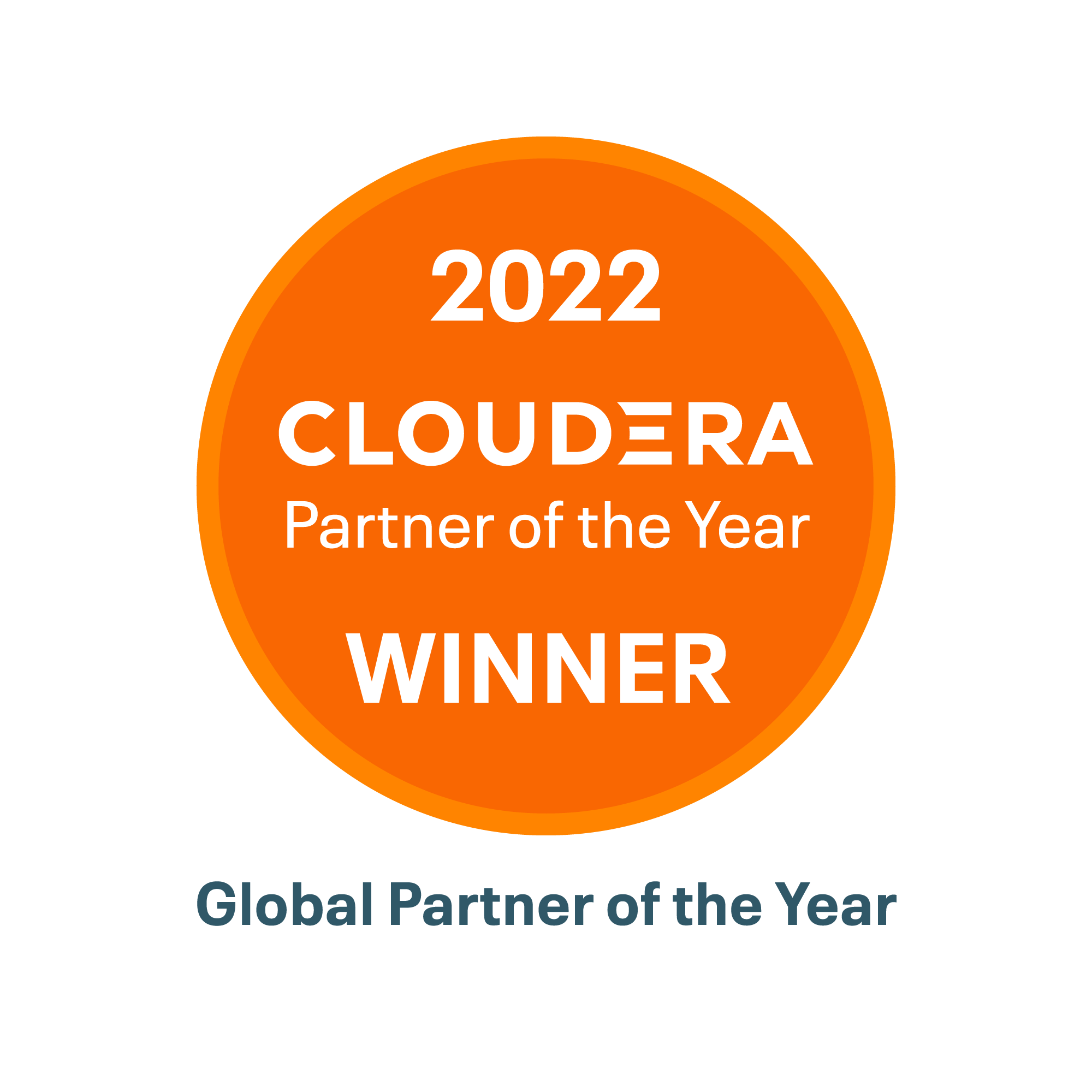Why Cloudera + IBM?
Data in Motion Acceleration: Simplify data movement, accelerate AI initiatives and enable real-time analytics across hybrid environments
Cloudera and IBM work together to deliver an end-to-end solution for real-time data streaming and analytics. Cloudera provides the foundation—managing data collection, real-time streaming, and secure data lake operations—while IBM’s watsonx platform adds powerful AI and analytics capabilities to turn that data into actionable insights. By unifying their capabilities, the companies enable organizations to streamline operations, strengthen governance, and drive real-time business outcomes.
Unlock the power of your data for faster strategic decisions
In an era where data is growing at an exponential rate, businesses are increasingly overwhelmed by the complexity of managing vast amounts of diverse, unstructured data. From data silos and escalating costs to complex migrations and the need for secure, trusted AI workflows, organizations are grappling with challenges that hinder growth and agility. With IBM and Cloudera, your business can turn these challenges into opportunities for growth and efficiency.
Together, Cloudera and IBM deliver a secure, trusted, and scalable hybrid data & AI platform, by seamlessly integrating Cloudera's open source technology with IBM's advanced foundation models for real-time data streaming and explainable AI workflows. With seamless data access across any cloud, your organization can optimize operations, reduce costs, and enhance agility and overcome today’s toughest data challenges.
Process Unstructured Data in Real-Time with IBM watsonx.ai and Cloudera
Unlock Real-Time Data Insights with IBM and Cloudera. Many of the companies we speak to want real-time insights from their data to drive quicker decision-making and to gain a competitive advantage. However, inefficiencies in streaming data pipelines and the limitations of processing unstructured data pose significant challenges.
This on-demand webinar explores how our customers solve this problem using Cloudera Data Flow with Apache NiFi and IBM watsonx.ai LLMs to get from data to insights faster than ever before.
About IBM
International Business Machines Corporation or IBM is an American multinational technology and consulting corporation headquartered in Armonk, New York. IBM manufactures and sells computer hardware and software, and it offers infrastructure, hosting and consulting services in areas ranging from mainframe computers to nanotechnology.
Benefits
Flexible price performance with ‘Bring Your Own Engine’ (BYOE) capability
BYOE allows you to select fit-for-purpose query engines like Presto, Spark, Hive or Impala, optimizing workloads for price and performance. Streamline AI and analytics with flexible workflows, to generate insights without complex SQL queries, and ensure trusted AI applications with governed data.
Power data-in motion with Cloudera Data Flow and an open data lakehouse architecture
Eliminate data silos and duplication through real-time data integration. With open formats like Iceberg and Hive, your business can seamlessly access and analyze data without forced migrations, enhancing operational efficiency and enabling faster, smarter decision-making.
Deploy trusted AI with Cloudera data and end-to-end AI governance for any model
Automate compliance and governance across your data lifecycle with built-in governance tools, reducing complexity and costs. Hybrid cloud capabilities ensure optimal AI performance and responsible, transparent AI workflows, enabling scalable operations across on-premises and cloud environments. Empower your team to harness the full potential of your organization’s data. With IBM and Cloudera, your business can break down barriers, streamline operations, and unlock new levels of innovation and insight – driving real, measurable success across your enterprise.

Use cases
- Build a better data lake
- Meet the growing challenges of AI
- Offloading Enterprise Data Warehouse and ETL workloads
Build a better data lake
Meet the growing challenges of AI
Offloading Enterprise Data Warehouse data and ETL workloads
Challenge: Explosive growth of data has forced organizations to use their enterprise data warehouse for purposes that it was never intended for — including running extract, transform, load (ETL) workloads and storing large volumes of unused data.
The challenge for the enterprise is to harness the new types of data, updated analytics practices and more efficient, cost-effective methods of storing and accessing data.


